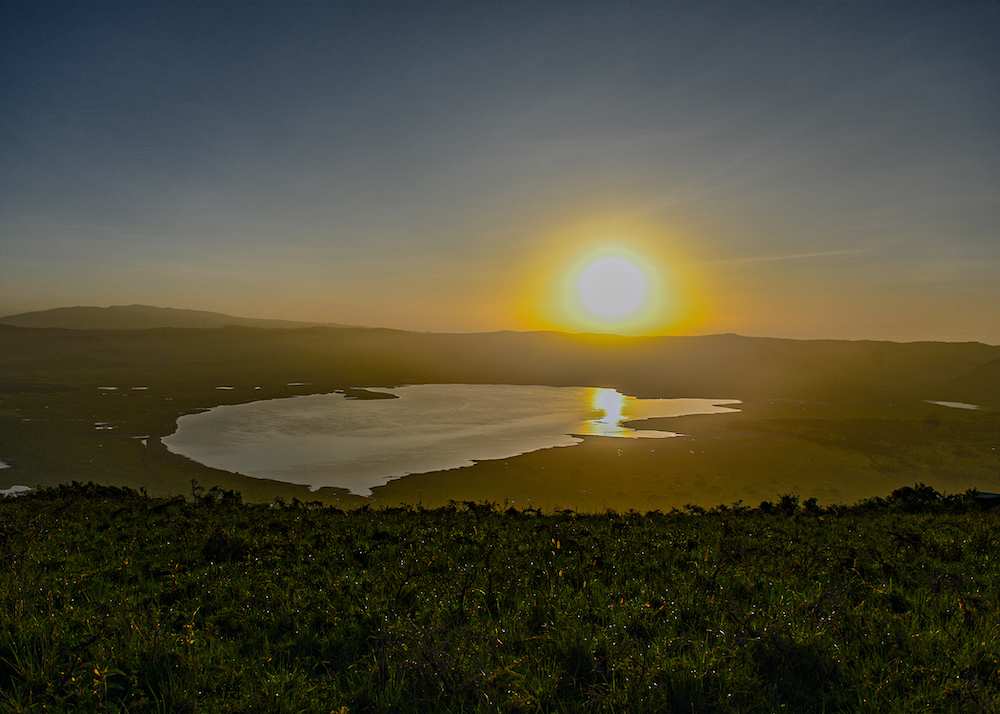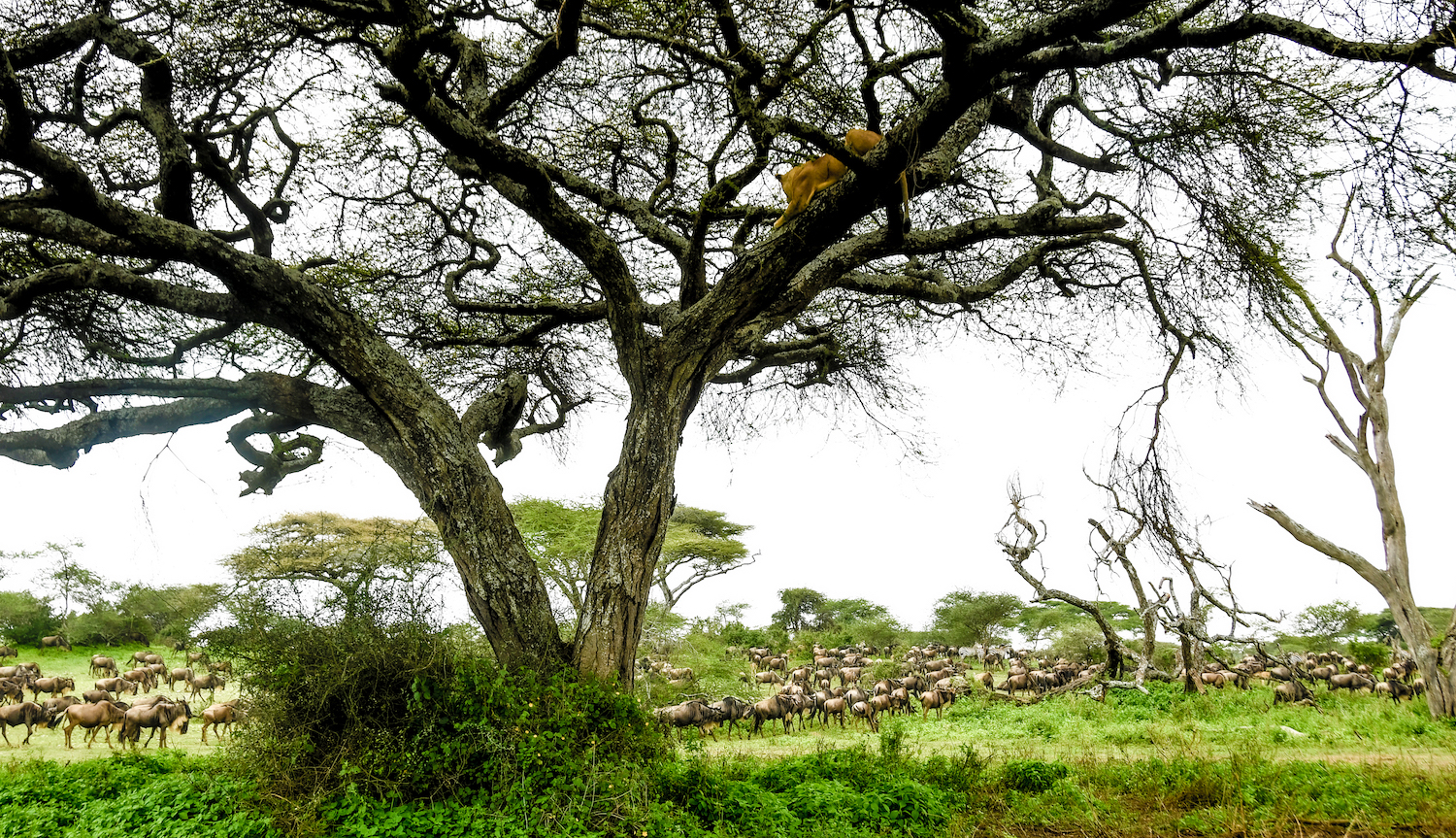Serengeti National Park – A Natural Wonder
Serengeti National Park, a UNESCO World Heritage Site and International Biosphere Reserve, is a jewel in the crown of Tanzania’s conservation efforts. Situated to the north of Maasai Mara Reserve in Kenya, to the southeast of Ngorongoro Conservation Area, and extending tantalizingly close to the shores of Lake Victoria in the west, Serengeti stands as the third-largest National Park in Tanzania, covering an expansive 14,763 square kilometers. Only Nyerere and Ruaha National Parks in the south surpass it in size, with 30,000 and 20,380 square kilometers, respectively.
Named aptly as “endless plains” in the Maasai language, Siringet, the moment you step onto the southeastern plains of the park from the Ngorongoro highlands, you are enveloped by a sense of boundless vastness. Declared a protected area in 1921 and designated as a National Park in 1951, Serengeti boasts the distinction of being Tanzania’s oldest National Park and an indisputable global icon among wildlife reserves.
Wildlife Abundance and the Great Migration
Serengeti National Park is a veritable haven for wildlife, boasting the world’s largest populations of a stunning array of species, including Wildebeest, Zebra, Cape Eland, Lion, Cheetah, Hyena, and Gazelles. The park is also home to one of the world’s last remaining large mammal migrations—the legendary Great Serengeti Migration—a spectacle that ranks among the Seven Natural Wonders of Africa.
The awe-inspiring migration is a ballet of life dictated by rainfall, water availability, and the abundance of fresh pastures. Each year, this grand procession follows a predictable clockwise pattern, with slight variations depending on the weather. Covering a staggering region of 25,000 square kilometers within the Serengeti ecosystem, about two-thirds of this area is protected within the Serengeti National Park, Ngorongoro Conservation Area, and the Kenya Maasai Mara National Reserve. The remainder stretches into adjacent areas bordering the Serengeti, including Loliondo Game Controlled Area to the northeast, Maswa Game Reserve to the southwest, and Grumeti Game Reserve and Ikorongo Game Reserve to the northwest, all within Tanzania. The migration remains in Tanzania for a minimum of nine months, from November to August, with the Serengeti National Park enveloping the core of this extraordinary ecosystem.
Epic Journey of the Great Migration
From December through April each year, contingent on the onset of short and long rains, the southeastern plains of Serengeti and the surrounding woodlands near Lakes Ndutu and Masek become a bustling hub for vast herds of migratory animals. Predominantly the wildebeest, numbering in the hundreds of thousands, gather here for breeding and regrouping. Geographically within the Ngorongoro Conservation Area, Ndutu holds particular significance in the Serengeti ecosystem, serving as the open short grass plains that provide crucial calving grounds for the wildebeest in February and March each year.
Ndutu and its neighboring plains are the exclusive domain of migratory animals, particularly wildebeest and zebras, for more than five months. This abundance attracts a thriving predator population, including lions, cheetahs, hyenas, and jackals. In the words of David Martin in his Ngorongoro guide book, “This is their home pastureland, the only place of any protracted residence.”
The onset of long rains in March, continuing through May, creates an ideal habitat for migratory animals to roam the Serengeti plains before they venture into regions with permanent water and pastures. As the dry season commences, typically in May and June, the most impressive and dependable migratory event occurs—the mass movement of animals away from the Serengeti plains. Lines and columns of wildebeest, stretching up to 40 kilometers in length (as observed from the air), embark on journeys heading southwest, north, or west as they seek the woodland zone.
The migration temporarily lingers in the Western Corridor, near Lake Victoria, from May to July, before commencing its journey north and northeast in search of fresh pastures and water sources. The Grumeti riverine system in western Serengeti plays a pivotal role as an early dry season migration route and a critical catchment area for the migratory animals. This habitat supports a dense population of resident ungulates, providing year-round game viewing opportunities.
While the Lobo area and certain parts of northern Serengeti, along the Mara River, remain rich in wildlife during the dry months due to permanent water availability, most migratory animals cross into Kenya’s Maasai Mara National Reserve by September. They spend just three months in Maasai Mara before returning to northern Tanzania and the Serengeti ecosystem in November.
While the Serengeti offers exceptional game viewing throughout the year, the Great Migration phenomenon adds an extraordinary dimension to the National Park, transforming it into a stage for one of the world’s most remarkable natural dramas.

